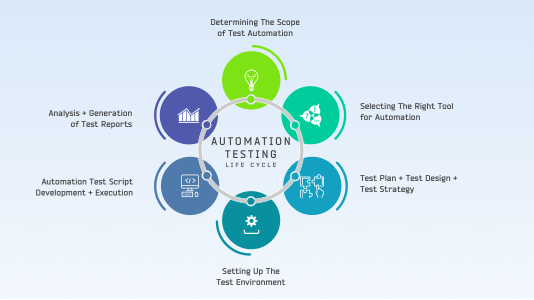The use of automated testing provides great opportunities and can significantly increase the reliability of the code and the security of the application. Therefore, the development of large and complex systems will certainly require the involvement of specialists who help you even with a test automation strategy example and perform the testing. So, we bring to your attention an article about building automated testing.
What Are the Benefits of Automated Testing?
Automated testing is now a key development process. And that is why test automation outsourcing becomes more important because of the opportunity to quickly inform developers about the state of the application. To ensure a constant flow of feedback, automated tests need to be performed consistently and quickly, and their results must be reliable and valid.
So, development and testing should be inextricably linked, and quality assurance should be built in from the very beginning of development so that new features do not break existing functionality.
Where to Start a Strategy?
It should be determined that the test strategy is a set of plans, thoughts, methods, and philosophy of the test process, and the test plan is specific instruction on how we will perform testing.
How to Create a Test Strategy?
To formulate approaches, we need to familiarize ourselves with ready-made methodologies or view existing test plans. You can find them on the Internet. Each time you take on some kind of work, you need to check whether there are new ideas and methodologies, articles, and templates on the topic of interest. You can always take something as a basis and form the structure of the strategy.
- Collect ideas (to look at them from different angles and form our opinion)
- Save data (for future use)
- Form data for the checkpoint (to create our own approach to testing)
Why Develop a Test Strategy?
The main task for testing the strategy is the goal. A strategy without a goal is not a strategy per se. And how can we formulate it? There are two main categories:
Business goals
These are business goals to achieve certain results in the market (increasing market share, fighting competitors, brand promotion, etc.).
Internal needs
Let’s assume that automation is needed, that is, a goal has been set or it has been chosen that some part of the project will be automated. What will be automated? In what language? Where? How? Which document will describe it? The approach will be formed, and the specialist will not automate this product in a chaotic manner. One approaches automation with a specific goal in mind, for example, to help minimize manual testing or reduce regression time, that is, something that automates well and gives a good result.
- Provide coverage to an acceptable level (you cannot provide 100% coverage, but you must do your best to ensure that obvious errors are corrected).
- Make sure the product meets original requirements and specifications.
- Provide confidence in the reliability of the software (users, customers, etc.).
You want to achieve higher ratings for your user. And your strategy will be formed as a result of what you will achieve.

